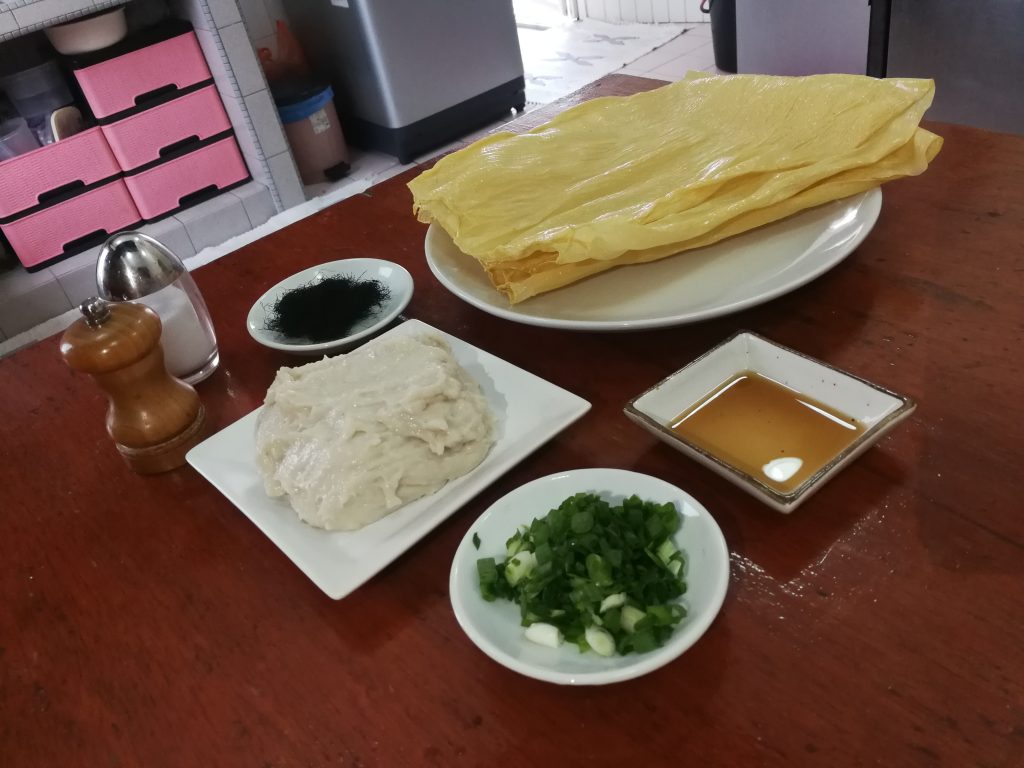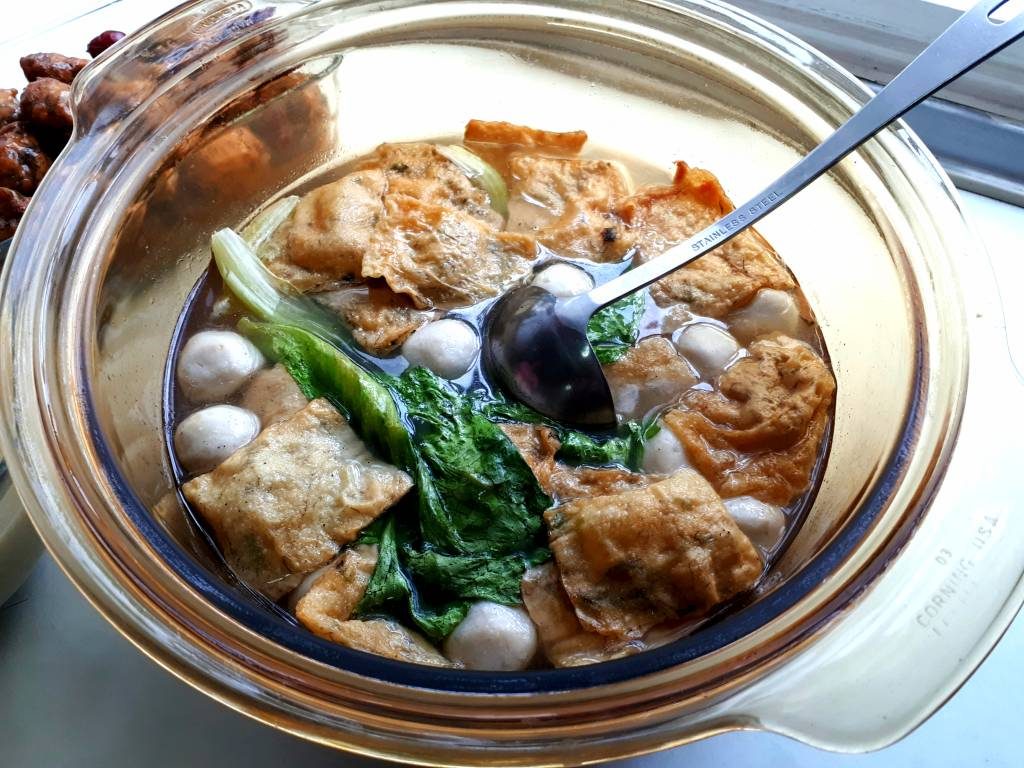
When you think of beancurd or tofu, it’s really not very exciting at all. But what about crispy beancurd skin stuffed with savoury fish? Doesn’t that sounds so much more appetising? Crunchy on the outside and warm and chewy on the inside, this dish, known as Fu Chuk, is yum! Added to a Chinese style clear soup or eaten as a snack dipped in a sweet and spicy sauce takes it up an extra notch.
Asian Comfort Food
Deep fried beancurd skin stuffed with fish paste is commonly found in Chinese soups, yong tau foo or in dim sum eaten on it’s own with sauce. It is delicious! We would even say that it’s a Malaysian or Asian version of comfort food.
While it is easily found in many restaurants and stalls in Malaysia, there’s nothing like making it fresh at home. You’ll be able to eat it piping hot and extra crispy! Best news of all is that making these crispy stuffed and fried beancurd munchies is not difficult at all.
Crispy Stuffed Fu Chuk
We were lucky enough to have guest home cook Susan Chan make time for us to share her recipe family recipe. While you certainly can go that extra mile and make the fish paste from scratch, this recipe uses ready made fish paste. They are available in many supermarkets and wet markets here in Malaysia.

Ingredients:
- 2 pieces of Fu Chuk or Bean Curd sheets – the hard type
- 1 fist full of Fatt Choy or Black Moss
- 300g of Fish Paste
- 1/2 tsp Salt
- 1/2 tsp Pepper
- 1 cup of refined cooking oil
- 1 stalk of spring onions – finely chopped
Method:
- In a bowl, combine fish paste, chopped spring onions, fatt choy, salt and pepper. Mix thoroughly with a silicone spatula or spoon.
- Gently pat the pieces of fu chuk with cloth that’s only slightly damp to remove all traces of dust that it may have from your local morning market stall.
- Unfold the fu chuk on a clean dry surface and spread the mix evenly onto half of the fu chuk sheet. Once complete, fold the other half over and pat it down.
- Cut the fu chuk that’s now filled with fish mixed paste into small squares.
- In a wok full of hot oil, place the small fu chuk squares in the oil piece by piece and deep fry until it is golden brown and crispy.
- Once it is fried, use a stainless steel food tong to pick up the fried pieces and place it on a napkin that is on top of a flat plate. This is so that the paper napkin can help absorb the oil.
- Eat in soup or on it’s own with a spicy dipping sauce.
Many Ways to Enjoy Fu Chuk
Enjoy the stuffed fu chuk with a dipping sauce. A Malaysian Chinese style dipping sauce varies from basic soya sauce with ginger and sugar to also adding in hoisin sauce, chili oil or grated ginger. We like to keep it simple with a kick of sambal. Here’s a Butterkicap quick dipping recipe:
- 1/3 cup soy sauce
- 1 tbsp basic sambal sauce
- 1 tsp sesame oil (optional)
- Depending on if your sambal is already sweetened or not, you can add sugar to your taste (optional)
If you want to try the stuffed fu chuk in a traditional Chinese soup, you can check out Susan Chan’s recipe for a Soup Named Good Fortune. Isn’t that a great name!
Let us know how it turns out by tagging us on Social Media and using the hashtag – #Butterkicap.
